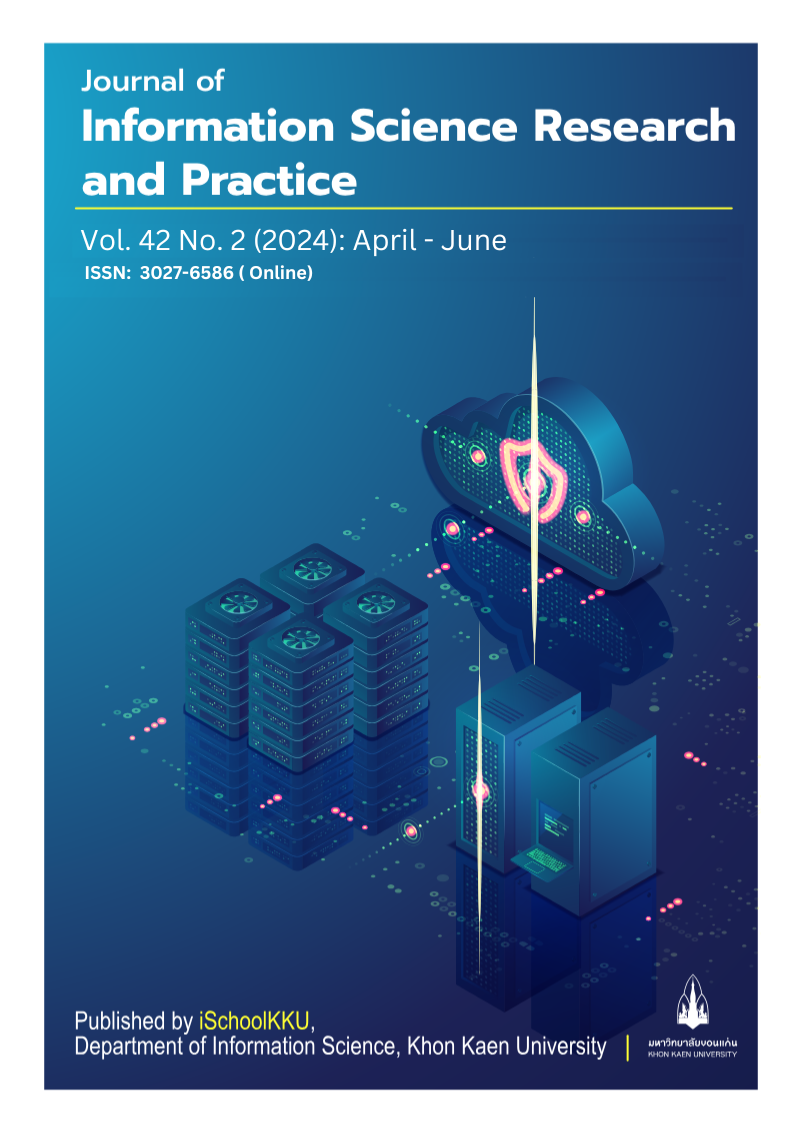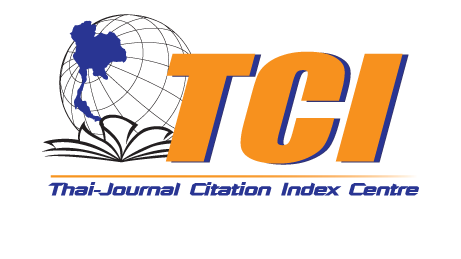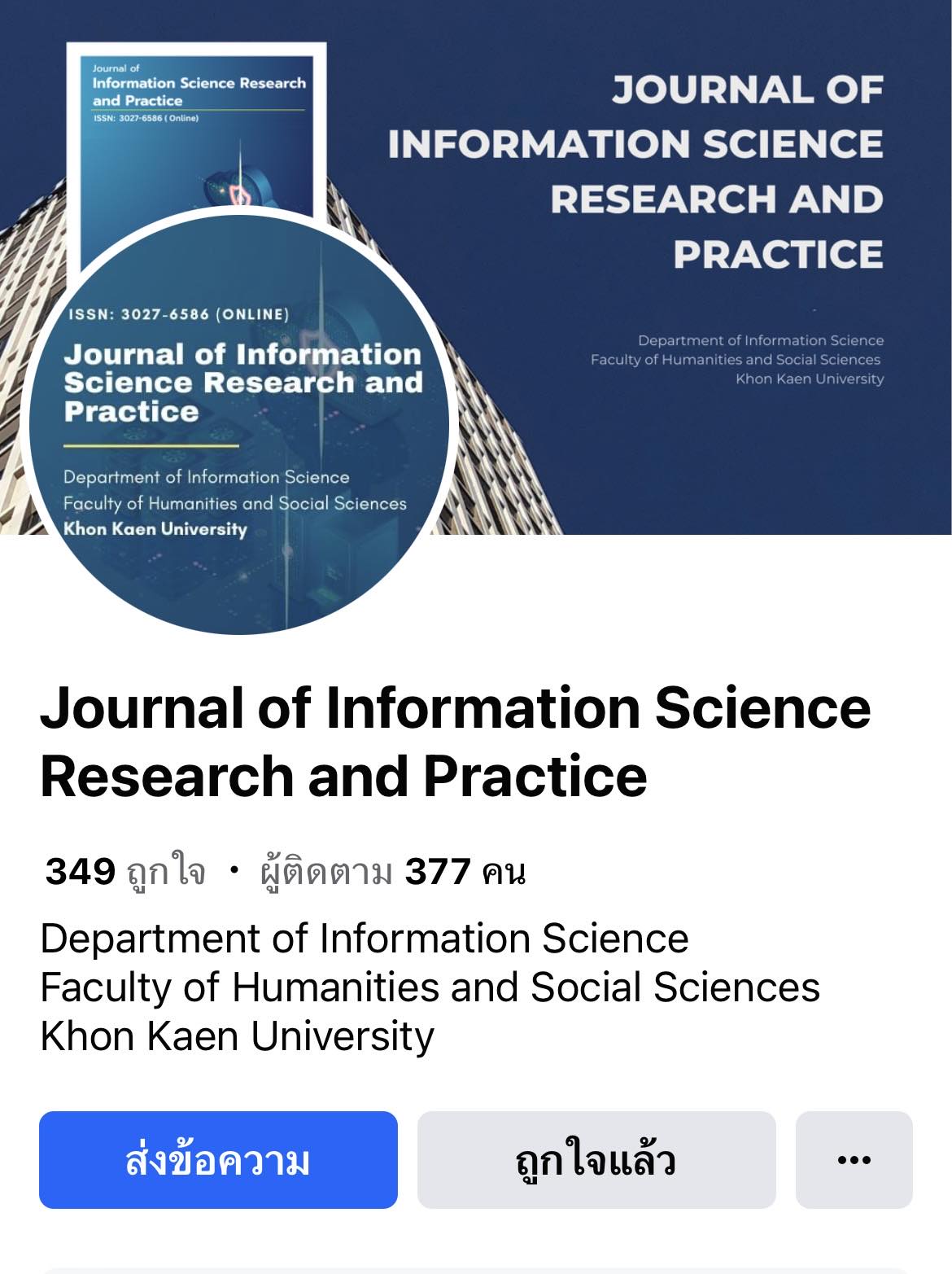An Analysis of Behavior on Social Media Research in Scopus by Bibliometric Approach
DOI:
https://doi.org/10.14456/jiskku.2024.10Keywords:
Bibliometric, Social Media, Bibliometrix, VOSviewerAbstract
Purpose: This study aims to study behaviors on social media research in the Scopus database.
Methodology: This research is a documentary research using a bibliometric approach. The principles of PRISMA were used to design the research method. The study is divided into 2 parts: 1) the general conditions of the search for research papers, researchers, research institutions/organizations, publication sources, and countries; and 2) an exploration of content characteristics and research trends concerning social media behaviors. The analytical tools such as Bibliometrix and VOSviewer were adopted to present analysis results through tables, diagrams and graphs, facilitating the analysis of co-citation, bibliographic coupling, co-occurrence and thematic evolution between 2008 and 2022 from the Scopus database.
Findings: The research results show that a total of 343 articles focusing on social media behaviors were studied, with the United States and China being the most productive and bibliographic coupling of the countries. Washington University School of Medicine stands out as the leading institution in terms of research output research output. Analysis of publishing sources reveals that the Computer in Human Behavior Journal is the most frequently cited journal with the highest number of related research articles, with an H-index of 10 and a quality ranking of Q1. Regarding researchers, Ghose A. emerges as the most influential, contributing significantly to research output and garnering frequent citations. In addition, the study of thematic evolution shows that diverse applications of social media, including behavioral research, natural language processing systems, surveys, deep learning, and more.
Applications of the study: The research results can be a valuable guide for researchers to conduct research on topics related to social media, both within Thailand and internationally. This research can also be useful to researchers or stakeholders involved in fostering research advancement within this domain.
Downloads
References
Allington, D., Duffy, B., Wessely, S., Dhavan, N., & Rubin, J. (2020). Health-protective behaviour, social media usage and conspiracy belief during the COVID-19 public health emergency. Psychological Medicine, 51(10), 1–7. https://doi.org/10.1017/S003329172000224X
Chaffey, D. (2024, February 1). Global Social Media Research Summary 2024. Retrieved from https://www.smartinsights.com/social-media-marketing/social-media-strategy/new-global-social-media-research/
Chander, R., Dhar, M., & Bhatt, K. (2022). Bibliometric analysis of studies on library security issues in academic institutions. Journal of Access Services, 19(2-3), 86–104. https://doi.org/10.1080/15367967.2022.2118058
Choopong, P., Sawangkul, S., Pinitpuwadol, W., & Sakiyalak, D. (2021). Bibliometric differences between scopus and google scholar for ophthalmology academics in Thailand: a comparative study. Thai Journal of Ophthalmology, 34(1), 30-38.
Chua, T. H. H., & Chang, L. (2016). Follow Me and like My Beautiful selfies: Singapore Teenage Girls’ Engagement in self-presentation and Peer Comparison on Social Media. Computers in Human Behavior, 55(A), 190–197. https://doi.org/10.1016/j.chb.2015.09.011
Corbett, G. A., Milne, S. J., Hehir, M. P., Lindow, S. W., & O’connell, M. P. (2020). Health anxiety and behavioural changes of pregnant women during the COVID-19 pandemic. European Journal of Obstetrics & Gynecology and Reproductive Biology, 249, 96–97. https://doi.org/10.1016/j.ejogrb.2020.04.022
Dollarhide, M. (2021). Social media: definition, effects, and list of top apps. Retrieved from https://www.investopedia.com/terms/s/social-media.asp.
Dong, X., Wei, X., Shu, F., Su, Q., Wang, J., Liu, N., & Qiu, J. (2022). A Bibliometric Analysis on Global Psychological and Behavioral Research Landscape on COVID-19 Pandemic. International Journal of Environmental Research and Public Health, 19(2), 879. https://doi.org/10.3390/ijerph19020879
Euajarusphan, A. (2021). Online Social Media Usage Behavior, Attitude, Satisfaction, and Online Social Media Literacy of Generation X, Generation Y, and Generation Z. SSRN Electronic Journal, 10(2). https://doi.org/10.2139/ssrn.3998457
Fu, F., Rosenbloom, D. I., Wang, L., & Nowak, M. A. (2010). Imitation dynamics of vaccination behaviour on social networks. Proceedings of the Royal Society B: Biological Sciences, 278(1702), 42–49. https://doi.org/10.1098/rspb.2010.1107
Ghose, A., Ipeirotis, P. G., & Li, B. (2012). Designing Ranking Systems for Hotels on Travel Search Engines by Mining User-Generated and Crowdsourced Content. Marketing Science, 31(3), 493–520. https://doi.org/10.1287/mksc.1110.0700
Innovation Foresight Institute. (2019). Foresight Tools. Bangkok: National Innovation Agency (Public Organization).
Jitprapat, S. (2022). A Bibliometric review of artificial intelligence in hospitals in scopus database. (In Thai). Master thesis in Graduate Studies Mahidol University.
Leung, X. Y., Sun, J., & Bai, B. (2017). Bibliometrics of social media research: A co-citation and co-word analysis. International Journal of Hospitality Management, 66, 35–45. https://doi.org/10.1016/j.ijhm.2017.06.012
López-Carril, S., Escamilla-Fajardo, P., González-Serrano, M. H., Ratten, V., & González-García, R. J. (2020). The Rise of Social Media in Sport: A Bibliometric Analysis. International Journal of Innovation and Technology Management, 17(06), 2050041. https://doi.org/10.1142/s0219877020500418
McCluskey, M. (2016). Introduction to information behaviour. Australian Academic & Research Libraries, 47(1), 53–54. https://doi.org/10.1080/00048623.2016.1162272
Moher, D., Liberati, A., Tetzlaff, J., & Altman, D. G. (2009). Preferred Reporting Items for Systematic Reviews and Meta-Analyses: the PRISMA Statement. PLoS Medicine, 6(7). https://doi.org/10.1371/journal.pmed.1000097
Mosleh, M., Pennycook, G., Arechar, A. A., & Rand, D. G. (2021). Cognitive reflection correlates with behavior on Twitter. Nature Communications, 12(1), 921. https://doi.org/10.1038/s41467-020-20043-0
Naree, P. (2022). A Bibliometric review of internal branding literature. (In Thai). Master thesis in Graduate Studies Mahidol University.
Noor, S., Guo, Y., Shah, S. H. H., Nawaz, M. S., & Butt, A. S. (2020). Research Synthesis and Thematic Analysis of Twitter Through Bibliometric Analysis. International Journal on Semantic Web and Information Systems, 16(3), 88–109. https://doi.org/10.4018/ijswis.2020070106
Pitithanabodee, N. (2021). Web citation of research articles on coronavirus disease (COVID-19) published in Thai journals: A bibliometric analysis. TLA Bulletin, 65(1), 1-14.
Rahman, N.A.A., Hassan, H.J., Osman, M.S., M.N., & Waheed, M. (2017). Research on the State of Social Media Studies in Malaysia: 2004-2015. Jurnal Komunikasi, Malaysian Journal of Communication, 33(4), 38–55. https://doi.org/10.17576/jkmjc-2017-3304-03
Shen, G., Jia, J., Nie, L., Feng, F., Zhang, C., Hu, T., Chua, T.-S. Zhu, W. (2017). Depression Detection via Harvesting Social Media: A Multimodal Dictionary Learning Solution. Proceedings of the Twenty-Sixth International Joint Conference on Artificial Intelligence. https://doi.org/10.24963/ijcai.2017/536
Steenkamp, M., & Hyde-Clarke, N. (2014). The use of Facebook for political commentary in South Africa. Telematics and Informatics, 31(1), 91–97. https://doi.org/10.1016/j.tele.2012.10.002
Ta-Kham, T., Saninjak, K., & Jitjaroen, W. (2021). An analysis of specialty coffee research publication using a bibliometric method. Journal of Information Science, 39(1), 1-19. https://doi.org/10.14456/jiskku.2021.1
Turan, M., & Kara, A. (2018). Online social media usage behavior of entrepreneurs in an emerging market. Journal of Research in Marketing and Entrepreneurship, 20(2), 273–291. https://doi.org/10.1108/jrme-09-2016-0034
van Eck, N. J., & Waltman, L. (2009). Software survey: VOSviewer, a computer program for bibliometric mapping. Scientometrics, 84(2), 523–538. https://doi.org/10.1007/s11192-009-0146-3
Wang, C.-H., Sher, S. T.-H., Salman, I., Janek, K., & Chung, C.-F. (2022). “TikTok Made Me Do It”: Teenagers’ Perception and Use of Food Content on TikTok. In Proceedings of the 21st Annual ACM Interaction Design and Children Conference (IDC ’22), (458–463). New York, NY, USA: Association for Computing Machinery. https://doi.org/10.1145/3501712.3535290
Wang, Z., Ma, D., Pang, R., Xie, F., Zhang, J., & Sun, D. (2020). Research Progress and Development Trend of Social Media Big Data (SMBD): Knowledge Mapping Analysis Based on CiteSpace. ISPRS International Journal of Geo-Information, 9(11), 632. https://doi.org/10.3390/ijgi9110632
Xu, Z., Zhang, Y., Wu, Y., & Yang, Q. (2012). Modeling user posting behavior on social media. Proceedings of the 35th International ACM SIGIR Conference on Research and Development in Information Retrieval - SIGIR ’12, (545-554). New York: ACM Digital Library. https://doi.org/10.1145/2348283.2348358








